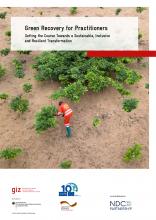2015 Myna Survey. Report to inform the Samoan Myna Management Plan


Island and Ocean Ecosystems, BRB
Available Online
In May 2015, 74 line transects in three different habitat types (plantation, mixed crops, urban) were surveyed on Upolu and Savaii islands, Samoa, with an aim of estimating the population size, density and distribution of two invasive bird species, Common Myna (Acridotheres tristis) and Jungle Myna (Acridotheres fuscus). Based on the available literature, the surveyed habitats were identified as preferred foraging habitat for the two myna species. The three habitats make up 24.9% of Samoas land area. Survey data were analysed using the Distance program. It was estimated that the population of myna birds occurring in the plantation, mixed crops and urban habitats of Samoa is approximately 158,995 (+- 29,588). Approximately 130,030 (+- 19,837) myna were estimated to live on Upolu and 28,968 (+- 9,751) on Savaii, across the three habitat types. Survey results also revealed that both species show a significant preference for urban habitat. Jungle Myna were estimated to be the most numerous (population estimate: 133,925 +-24,321), occurring on both islands and in all surveyed habitat types. Jungle Myna seem to have saturated the urban habitat available in Upolu and therefore have proceeded to colonise plantations and mixed crops adjacent to urban areas. Common Myna (population estimate: 23,367 +- 7,612), having reached the shores of Samoa ca. 20 years later than Jungle Myna, show highest density in urban environments. They are concentrated in the north-west section of Upolu, with only a few individuals observed on the east coast of Savaii.









